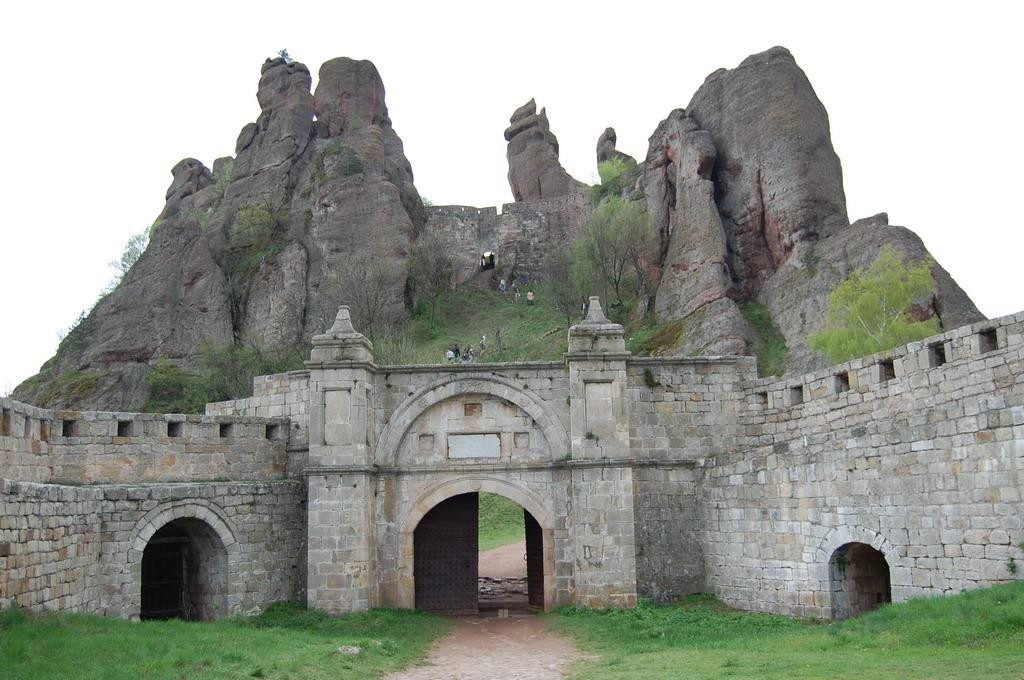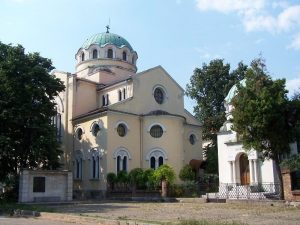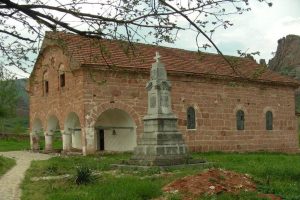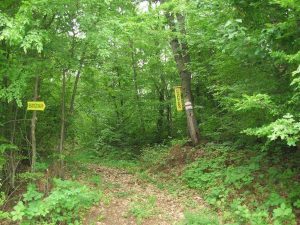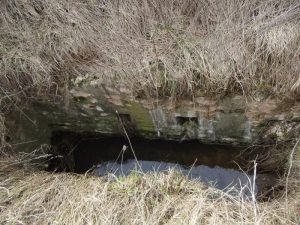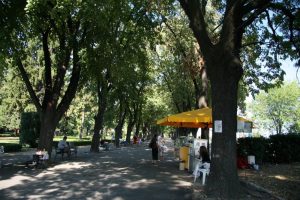

Belogradchik Fortress is a historic and impressive architecture monument. It is situated at 610 meters altitude and has an area of 10,200 square meters. Its silhouette is slim and fits into the large space being surrounded by reddish cliffs, towering over Belogradchik.
The largest part of the fort has a spectacular view. On the south can be seen Stara Planina ridge, Kom mountain peak to Vrashka an on the west is the important part of the mountains and the Carpathians. Belogradchik fortress occupies a strategic place in the Balkans – next to the “Saint Nicholas” and “Kadu-Boaz.”. The construction takes place in the first and third century AD as a small shelter-fortress. The builder used skillfully the elliptical inaccessible edge for “the first plate” and the performant functions of defense, surveillance, security and communication tools organized inside the facility. Archaeological studies have uncovered foundations of walls, fragments of pottery, iron spearheads and darts, coins of Roman emperors – Vespasian, Trajan, Septimius Severus, Gordian III, Decius Trajan.The fortress was during late antiquity of a strategic significance and it was appreciated by the ruler of Vidin,, Ivan Sratsimir / 1356-1396 /. During his reign the fortress has been additionally strengthened and expanded. There are two parts / from the southeast and northwest / with auxiliary facilities. Wooden suspended bridges and stairways of stone, give more opportunities for rapid maneuver. For the first time the name of the city was mentioned by Hungarian that describes the march of Lyudovig I Anzhuy. The chronicle indicates that after three months from the conquest of Vidin, in June 1365 were also captured other cities in the area, including Fortress Fehervar / Belogradchik /. Housed in a garrison, he was banished in 1369 by the Bulgarian insurgency. In 1396 Belogradchik fortress was conquered by the Ottomans and was partially destroyed. In 1454-1455 it was placed in the guard of 8 people, and a hundred years later, the garrison already had 27 soldiers and a Dizdar head. At the beginning of the 19th century the new masters made only minor repairs and improvements to the fort. The complete reconstruction along with its expansion, began in 1805 by french engineers and was completed in 1837 by the italians engineers. The walls reach a height of 12 meters, 2.5 meters wide at the base and are well reinforced with blocks of white stone against mortars. The routes ensure the speed and mobility in defense.
In the form of three fortified courtyards with three massive buried gates with iron bars. The defense capacity of the fortress was reinforced by three places for cannons and three cannon platforms.
In the immediate vicinity there is the underground storage of food and ammunition. The guard of the fortress was placed, during a period, into three guard rooms, equipped with stone fireplaces and chairs. The fortified street and the first entire courtyard are cobbled having an important economic significance. Near by were small size buildings for housing, workshops, stables for weapons. The free space of the second courtyard is occupied by the flour mill and stables. The water needs were satisfied from a well located in the southern part of the middle yard and by two tanks dug into the rock which collected the rainwater. Important for the protection of the fortress is the defensive belt from outside, including the dug solid fence having the pillars from the ground and baskets filled with stones and earth.
To strengthen the western sector of the fortification system built in 1862, was, therefore, raised the Suleymanov fort.
The history of Belogradchik fortress is associated with the famous Hajduk Veljko, who ruled it in 1809. With the heroism and desire for freedom of the bulge insurgency from 1850, took place the actions of detachment from Khitov in 1876.
During the years 1877-1878 in the Russo-Turkish War, was besieged by the Russian and Romanian troops. On February 25th, 1878 in accordance with the armistice signed was given to the Allied forces.
The destiny gives to it an important role during the Serbo-Bulgarian War – 1885. When the walls fell, Serbian forces entered through the passes of Balkans. Belogradchik Fortress must inherit also the traditions acquired by the building.
It impresses not only by its monumentality but also is well proportioned and has some beautiful views. The ramparts follow a monotonous line, a monotony interrupted by the cornices, cannon entrances and octagonal turrets meant to be places for landing. The gates have strong pillars, that end with pyramidal towers and are adorned with stone carvings. They include decorative niches, solar signs, marble plates with texts from the Koran, stylized images of animals and plants. In white and red stone is used in the arches over the access ways. The two lions reinforce the main gate.Restored and spectacularly lit up during the night, Belogradchik Fortress is well worth visiting.
Astronomical Observatory – Belogradchik
Astronomical Observatory – Belogradchik is one of the two observatories included by the Astronomy Institute at the Bulgarian Academy of Sciences, together with National Astronomical Observatory – Rozhen. It is located in the town of Belogradchik in northwest Bulgaria.
The Observatory was founded in 1961 on the initiative of local physics professor Hristo Kostov and became the first school observer in the country. In the mid 70s is used by the Institute of Astronomy as basis for monitoring the Earth’s artificial satellites, and with the beginning of 1976, the Institute deals with full operation of the plant. Initially, the observatory has15 inch Cassegrain, which reflects the telescope’s type, manufactured by Zeiss. In 1969, on the 6-foot dome is mounted a 60-inch telescope also type Zeiss, which is the second largest telescope in the country. In 1994 the observatory received a third telescope of 14-inch, Schmidt-Cassegrain type, produced by Selestron and installed in a dome previosly built, of the 4-feet.
